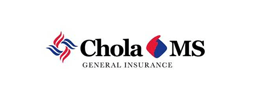Last updated on: September 19, 2025
Family Floater Health Insurance is a crucial financial safeguard against escalating medical costs in India. This ultimate guide details how a single sum insured covers all family members, including spouse, children, and parents. It outlines essential coverage for hospitalization (pre, post, in-patient), day care procedures, and often includes maternity and newborn care as add-ons. A key focus is understanding waiting periods (initial, specific diseases, pre-existing conditions) and common exclusions. The guide provides strategic advice on choosing the right sum insured, evaluating policy features like restoration and no-claim bonus, and leveraging tax benefits under Section 80D. It simplifies the claim process (cashless vs. reimbursement) and offers a comparative table of top plans, aiming to empower families for financially secure healthcare.
A comparison of some well-known Family Floater health insurance plans can be found here. Please be aware that premiums and policy features are subject to change. Always check with the insurer directly for the most recent information.
| Name of the Insurer and Plan | Principal Characteristics | Sum Insured Options (Indicative) | Entry Age (Indicative) | Waiting Period (Pre-existing/Specific Diseases) | USP |
|---|---|---|---|---|---|
| HDFC ERGO Optima Restore | Benefit, No Claim Bonus Super, Lifetime Renewability | ₹3 Lakhs to ₹2 Crores | 18-65 years (adult), 91 days–25 years (child) | 3 years / 2 years | Automatic restoration of the insured amount, high NO-Claim Bonus. |
| Niva Bupa ReAssure 2.0 | ReAssure Benefit (unlimited restoration), Live Healthy Rewards, Lock the Clock | ₹5 Lakhs to ₹1 Crore | 18-65 years (adult), 91 days–30 years (child) | 3 years or 2 years | Unlimited sum insured restoration, premium locked at entry age. |
| Care Health Insurance – Care Plan | No Claim Bonus Super, Unlimited Automatic Recharge, Discount for 2-year Policy | ₹5 Lakhs – ₹75 Lakhs | 18-99 years (adult), 91 days–24 years (child) | 4 years / 2 years | Covers higher entry age for adults, unlimited sum insured recharge. |
| Aditya Birla Activ Health Platinum | HealthReturns™ (up to 100% premium back), Chronic Management Program, Restore Benefit | ₹2 Lakhs to ₹2 Crores | 18-99 years (adult), 91 days–25 years (child) | 3 years / 2 years | Incentives for healthy living, comprehensive chronic disease management. |
| Star Comprehensive Insurance Policy | Restore benefits, air ambulance, second medical opinion, and organ donor expenses | ₹5 Lakhs to ₹1 Crore | 18-65 years (adult), 16–25 years (child) | — | Broad coverage including advanced features |
| Bajaj Allianz Health Guard | High cumulative bonus, organ donor expenses, bariatric surgery (sub-limit), optional critical illness rider | ₹3 Lakhs to ₹1 Crore (typical) | 18-65 years (adult), 91 days–25 years (child) | — | Includes advanced surgery options and add-ons |
| ManipalCigna ProHealth Prime | Unlimited restoration, wellness programs, worldwide coverage (optional) | ₹5 Lakhs to ₹3 Crores | 91 days–25 years (child), adults not mentioned | 3 years or 2 years | High sum insured options, focus on wellness |
Notice: This table is merely meant to serve as an example. Always review the terms of the policy and the most recent promotions offered by the relevant insurance providers.
Protecting your family’s health is crucial in the uncertain world of today. A single medical emergency can result in severe financial strain because healthcare costs in India are constantly rising. Family Floater Health Insurance becomes an essential financial safeguard in this situation. This thorough guide will give you all the information you need to comprehend, select, and apply the best family floater plan for your loved ones in 2025–2026.
All family members covered by the policy share a single sum insured under a family floater plan. It’s an easy and affordable way to get your family’s medical needs met under one roof.
A Family Floater policy usually includes coverage for:
Important: Even though it’s very convenient, make sure the amount insured is sufficient, particularly if you’re covering elderly parents who may require more medical attention.
Family Floater health insurance plans are designed to cover all insured members for various medical costs. While specific plans differ, here’s what’s generally included:
Extra Benefits (May Need a Higher Premium):
Recognizing the Important Waiting Times
The first waiting period, which is typically 15–30 days:
Waiting Time for Certain Conditions/Procedures (Typically 1-2 Years):
Pre-existing Disease (PED) Waiting Period (typically 2-4 years):
Maternity Waiting Period: 9 months to 4 years, if chosen.
To avoid claim surprises, it is essential to comprehend exclusions. The following are typical exclusions in family floater plans:
The particular needs and circumstances of your family must be carefully taken into account when choosing the best plan.
Young Family (Parents + Young Children): Benefits like newborn coverage may be the focus of a modest sum insured.
A larger sum insured is essential for families with elderly parents because their medical needs may be greater. Look for senior citizen co-payment provisions.
Number of Members: Verify that adding all desired family members is permitted by the policy.
The most important choice is this one. Think about how much major surgeries and treatments (like cancer treatment or a heart bypass) typically cost in your city.
As a general rule, in Tier 1 cities, ₹10–15 Lakhs SI is a good starting point for a family of three or four (young couple with children). Families with elderly parents should budget at least ₹15–25 lakhs.
Keep in mind that one serious illness can deplete the entire insured amount because it is shared. To restore the insured amount following partial or complete use, look for Restore Benefit or Recharge Benefit.
This is a benefit for not filing a claim during a policy year. Without raising your premium, your sum insured rises by a predetermined percentage (for example, 5–10%). Seek out plans with a high NCB and a cap (e.g., up to 50% or 100% of SI).
Sub-limits: Particular restrictions on particular costs (e.g., room rent, specific procedures). Choose plans with few or no sub-limits.
Co-payment: The portion of the claim that you have to pay out of pocket. A high co-payment lowers premiums but raises the amount of money that must be paid out of pocket when filing a claim. If at all possible, steer clear of co-payments, particularly for senior citizens.
If the sum insured is partially or completely depleted during a policy year, this feature returns it to its initial amount. For a family floater, this is crucial because a single significant claim does not leave the rest of the family without insurance.
For a smooth claim settlement process in an emergency, make sure the insurer’s cashless network includes the hospitals of your choice in your city.
Selecting a policy with lifetime renewability will guarantee ongoing coverage even as you age and your healthcare needs increase.
Select insurance companies that have a high CSR (ideally greater than 90%) and a track record of easy and transparent claim resolution. Recognize their reimbursement and cashless procedures.
If your family’s needs are met by add-ons like maternity, critical illness, or OPD coverage, think about getting them, but assess whether the higher premium is warranted.
Section 80D of the Income Tax Act of 1961 allows for substantial tax deductions for premiums paid toward a Family Floater health insurance policy.
Because of this tax advantage, purchasing health insurance is not only a wise financial move but also a protective measure.
Being aware of the procedures, whether cashless or reimbursement, can help ease anxiety in the event of a medical emergency.
Are families with elderly parents a good fit for a family floater plan?
It varies. Although convenient, the shared sum insured may be rapidly depleted by your parents’ medical bills if they are elderly and have serious health problems, leaving other family members at risk. In these situations, it might be wiser to think about a senior citizen plan or a separate, high sum insured individual policy for parents, along with a floater for younger members.
Can I add a newborn or a recently married spouse to an existing family floater policy?
Yes, you can add new members to most family floater plans during renewal or within a predetermined time frame (such as 30 to 90 days) for newborns or recently married spouses. There might be an additional premium fee. Newborns must be added to the main policy after being covered by the mother’s maternity benefit from day one for a predetermined amount of time.
What occurs if a single family member uses up all of the insurance money?
Other family members (or the same member for a different illness) may file claims if the policy has a Restore/Recharge Benefit, which restores the sum insured to its initial amount (typically once per policy year per unrelated illness). Without this benefit, after the sum insured is depleted, no claims may be made until the following policy year.
Do family floater plans cover the outpatient department (OPD)?
Standard family floater plans usually only cover in-patient hospital stays. Nonetheless, OPD coverage for consultations, diagnostic tests, and pharmacy bills without hospitalization is provided by certain premium plans or particular riders. These typically have higher premiums and sub-limits.
What distinguishes individual health insurance plans from family floaters?
All covered members of a family floater share a single sum insured. Every member of an individual plan has a distinct sum insured. While individual plans offer specific coverage for each person, floaters are typically more affordable for families.
Are all members’ pre-existing conditions covered by a family floater policy?
Yes, after the specified waiting period—typically 2-4 years from the policy’s inception—has passed, all covered members’ pre-existing diseases—including those that have recently been added, though certain restrictions apply—will be covered. It is essential to disclose pre-existing conditions accurately.
Is it possible to transfer my family floater policy to a different insurance provider?
Yes, policy portability is permitted by IRDAI regulations. As long as you apply for portability well in advance of your renewal date, you can transfer your family floater policy to a different insurer and still benefit from waiting periods and No Claim Bonuses that have already been completed.
Family Floater Health Insurance is a calculated investment in the well-being and financial security of your family, not just a cost. You can give yourself great peace of mind by selecting a plan carefully, comprehending its intricacies, and renewing it on a regular basis. This will guarantee that your loved ones are shielded from the constantly rising costs of healthcare. Make a plan and safeguard your family’s future right now!
Disclaimer: This information is general in nature and should not be interpreted as medical or financial advice. Before making any purchases, always get advice from a certified financial advisor or insurance specialist. The specific insurance companies may alter the terms, conditions, and features of the policy. For accurate information, consult the official policy documents.












How could we improve this article?
Written by Prem Anand, a content writer with over 10+ years of experience in the Banking, Financial Services, and Insurance sectors.
Prem Anand is a seasoned content writer with over 10+ years of experience in the Banking, Financial Services, and Insurance sectors. He has a strong command of industry-specific language and compliance regulations. He specializes in writing insightful blog posts, detailed articles, and content that educates and engages the Indian audience.
The content is prepared by thoroughly researching multiple trustworthy sources such as official websites, financial portals, customer reviews, policy documents and IRDAI guidelines. The goal is to bring accurate and reader-friendly insights.
This content is created to help readers make informed decisions. It aims to simplify complex insurance and finance topics so that you can understand your options clearly and take the right steps with confidence. Every article is written keeping transparency, clarity, and trust in mind.
Based on Google's Helpful Content System, this article emphasizes user value, transparency, and accuracy. It incorporates principles of E-E-A-T (Experience, Expertise, Authoritativeness, Trustworthiness).